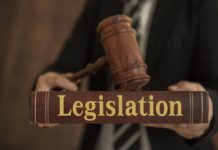
Federal Court. In determining non-revocation request under s 501CA(4), AAT had to consider Direction 79, para 14.5(1) of which provided AAT had to consider the "extent of any impediments that the non-citizen may face if removed from Australia to their home country, in establishing themselves and maintaining basic living standards (in the context of what is generally available to other citizens of that country)...". Does para 14.5(1) require decision-makers to "draw a comparison between the welfare systems in Australia and [the non-citizen's home country]"? Is para 14.5(1) to be applied "solely by reference to a generic citizen of the relevant home country, the characteristics of whom are uninfluenced by the particular non-citizen’s personal circumstances"?
Para 14.5 of Direction No. 79 provided as follows:
Extent of impediments if removed
(1) The extent of any impediments that the non-citizen may face if removed from Australia to their home country, in establishing themselves and maintaining basic living standards (in the context of what is generally available to other citizens of that country), taking into account:
a) the non-citizen’s age and health;
b) whether there are substantial language or cultural barriers; and
c) any social, medical and/or economic support available to them in that country
The Tribunal's reasons included the following paragraph (emphasis added):
[86] However, the Direction requires that a decision-maker must consider the extent of impediments that a non-citizen may face in settling and maintaining basic living standards through the lens of what is available to the person in the context of what is generally available to other citizens of that country. Thus, the requirement on a decision-maker in considering paragraph 14.5(1)(a) and (c) of the Direction is not to measure what the Australian welfare system may provide, or have provided to an individual, compared with what may be available in the welfare system of a country to which a non-citizen is repatriated. The correct approach is to assess what is generally available to citizens of the other country and would be available to a person, who is a citizen of that other country (who is broadly of the same age and with similar medical needs), if the person were repatriated.
The questions to the Federal Court (FCA) were as follows:
Question 1: Does para 14.5(1) of Direction 79 require decision-makers to "draw a comparison between the welfare systems in Australia and [the non-citizen's home country]"?
Question 2: Is para 14.5(1) to be applied "solely by reference to a generic citizen of the relevant home country, the characteristics of whom are uninfluenced by the particular non-citizen’s personal circumstances"?.
Question 3: Did the last sentence in the Tribunal's reasons at [86] "necessarily betray the principles discussed above"?
The answered the above questions as follows:
The remainder of this article is only available to Case Law and Platinum subscribers.
Read our Terms & Conditions and upgrade below:
Monthly Subscriptions
Annual Subscriptions
Where GST applies, the above amounts are inclusive of GST.
Content Types
Basic Content includes basic news, some media articles and selected announcements.
Premium Content includes all our content, except for Case Law Content. In other words, it includes Basic Content, plus all our articles on legislative and policy changes, industry updates and the Migration Legislation Tracker.
Case Law Content includes Basic Content, plus case law summaries, analysis and extract, but does not include Premium Content.
Platinum Content includes Basic Content, plus Premium Content, plus Case Law Content. In other words, it includes ALL our content.
If you already have a Case Law or Platinum subscription, click on 'Login' below.










